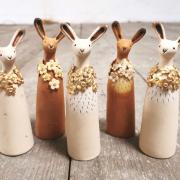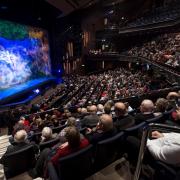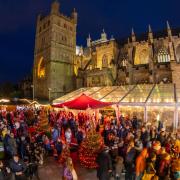This month our columnist Mary Quicke finds that a trip to Stateside makes her think about home in a new light
I went to California earlier this year. I was there to keep in touch with people who love our cheese, sell them some more and to tap into the vibrant world of American artisan cheesemaking. We sell cheese to some of the best cheese outlets across the world, and I learnt a lot from seeing how they do it. What flavours and qualities do they value? I want them to carry on buying our cheese - about a quarter of our sales at the moment.
The cheese landscape in America, at least at the artisan, handmade end, is no longer the rubbery, tasteless desert it used to be (though there is plenty of that). Those in the know are very proud of the remarkable development of American cheese over the last few years. It echoes, on steroids (you’d expect that of the Americans), the resurgence of handmade cheese in the British Isles over the last 20 years, with Devon at the forefront.
I visited some real standard bearers for local artisan food, Cow Girl Creamery and Cypress Grove Creamery. They tell a potent story about why choose delicious local artisan food, how buying artisan funds the farmers to tend their landscapes, to allow them stay on the farm, resisting industrial farming or selling out to non-farmers. They tell people who choose to enjoy the food of that place that they fund the place by buying the food. I want to learn how to tell that story better, to have our farm shop be an inspiring hub of local food. With all that cheese excitement going on in America, I need to go over there and remind them that our cheese is great, that they fund our beautiful landscape by buying our cheese.
They love the different flavour of our cheese, how it reflects our rich valley in Devon, the milk of our cows grazing our pastures. We take grazing for granted, and it’s rare in America - Northern California, which should be green, was parched grey-brown, the worst drought since 1840, and the rest of America a deep freeze. There are a few hardy pioneers making cheese from the few months they can graze. People go dewy-eyed when they hear about our cows grazing for 11 months of the year in Devon.
They love how long we’ve been on our farm - 14 and 15 generations. At 470-something years, that’s twice as long as America has been independent. Most Americans have been there a generation or three, stories of grandparents and parents pioneering, working hard to make something from the vast blank canvas america seemed to the emigrants. There’s that whole self creation about Americans that I love. In Devon, we have a rootedness, a sense that our past gives who we are, that’s both a source of strength and also of limitation.
Lots of Americans I speak to are blank about where Devon is - half of all Americans don’t have a passport, and have never been outside the States. I used to explain to them where we are - the bit at the bottom that sticks out towards America, but not the very end bit. That was more geography than they wanted if they didn’t already know.
Now I say Devon is where the pilgrim fathers set sail, and our farm is about 40 miles away from there. Emotional geography seems to work to give them a sense of where we are.
What do Americans really know and love about Devon? It’s always the cream tea, that great work of art. Let them talk about what they know about Devon and they come back to that simple and magical combination of a plate of scones, a brimming bowl of crusty, clotted cream, a rich and fruity jam, a comforting tea pot, and all that homely china.
They say those that have visited had to hunt one down. Is the cream tea a profit not honoured in its own land? In America, that’s what people know and love us for, let’s honour it amongst ourselves and give it to our visitors - scone or split, cream first or jam first (that Cornish invader)…our rich, culinary triumph.



























